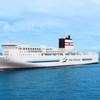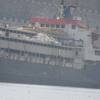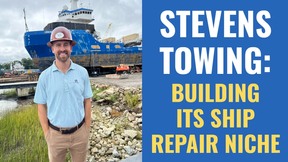The End of the Single-Hull Tanker
IMO Secretary-General Efthimios E. Mitropoulos explains in an exclusive interview for Hamburg Messe what the motivation was for toughening of the IMO regulations on the service life of single-hull tankers.
Mitropoulos, at the end of 2003, IMO accelerated the tanker phase-out for single-hull tankers. Why was that decision taken?
That decision was taken in the light of particular concerns that some of our Member governments had following the sinking of the tanker Prestige off the coast of Spain. The principle that single-hull tankers should be phased out, due to the additional protection afforded by double hulls in certain types of incident, had already been established and was enshrined in the MARPOL Convention, but the membership agreed that this phase-out should be brought forward.
Has everything been done to protect against tanker disasters from 2010? Where do you see room for improvement? One can never say that everything has been done. However, what we aim to do is gradually tighten the safety net so that sub-standard ships and sub-standard operators find it increasingly difficult to do business. The acceleration of the single-hull phase-out for tankers was one of a long line of measures that have helped improve tanker safety and increase environmental protection over the years, and I am sure there will be others in the future, although at this stage I would not like to try and predict what they might be.
What technologies should be developed more vigorously?
One of the most notable things about the shipping community is the innovative marine technology sector, which seems to be constantly breaking new ground and developing new technological solutions. An event such as SMM provides an international industry showcase, and your visitors will be able to see for themselves the strength and depth of this vibrant industry sector. It would not be appropriate for me to try to channel their creativity in any particular direction, but I am always pleased to see technical innovation that furthers the causes we espouse in IMO. Within the Organization, we now place our emphasis more firmly on the human element, and in this context are particularly keen to see proper attention paid to the ergonomic aspects of any new technological development.
Tanker fleet in upheaval
The world's tanker fleet is currently in a phase of upheaval, not least due to the IMO regulations. According to Intertanko, the International Association of Independent Tanker Owners, the world tanker fleet currently comprises about 3600 ships with more than 10,000 dwt. About 60% of these are already double-hull vessels. By the end of 2005 the figure should be 74%, according to the estimate of an Intertanko spokesman. Intertanko has 242 members, with 2160 tankers and 160 million dwt, accounting for about 70% of the world's independent tanker fleet of vessels over 10,000 dwt. Lloyd's Register-Fairplay indicates a total of 2600 double-hull tankers worldwide. According to Lloyd's Register-Fairplay for last year, 35.2% of all newbuildings (measured in gt) were petroleum tankers (12.7 million out of a total of 36.1 million gt); measured in cgt (compensated gross tons) the figure was still as high as 21.3%.
According to first estimates, the shipyards worldwide took more than 70 newbuilding orders for petroleum tankers in the first half year of 2004, for approximately 6.5 million gt. That corresponds to about one fifth of the world's newbuilding tonnage orders for this period. At present there are some 1100 double-hull tankers in the order books of shipbuilders worldwide.
The rapid growth in quantities of new double-hull tankers has also meant extra work for the classification societies. At present, the classification societies belonging to the IACS (International Association of Classification Societies), such as the American Bureau of Shipping, Bureau Veritas, Det Norske Veritas, Germanischer LLoyd, Loyd's Register, Registro Italiano Navale and others are developing common standards for design features and calculation programs, and for definition of the scope of inspections. This harmonization effort is intended to produce a uniform quality standard, according to a manager from Germanischer Lloyd. But the standardized construction specifications are not expected to enter into force before 2005. There will be 1450 exhibitors at the SMM 2004, from 50 nations. 40,000 trade visitors from all parts of the world are expected in Hamburg for the SMM week.
The SMM 2004 is the premier fair of the shipbuilding industry, setting the trends with a comprehensive range of maritime high-tech products; it is a platform for innovation and knowledge transfer in all areas of the maritime industry.











